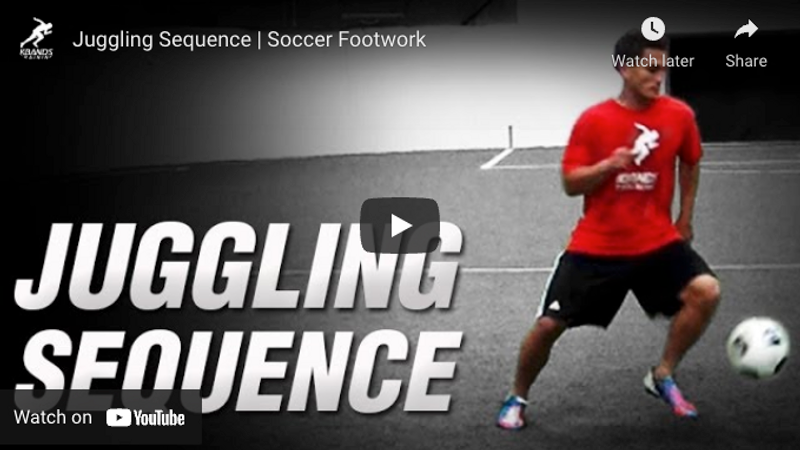Soccer Juggling Sequence
Both offensive and defensive soccer players occasionally get caught in tight turns and corners on the field, and in almost every game, intense action takes place along the sideline at least a few times. Soccer juggling skills can help players maintain strong control over the ball during these situations, even in closed areas and during aggressive plays at the edge of the line. Most serious, advanced-level players first learned how to juggle a soccer ball during youth practice and solitary moments off the field, and many advanced players will admit that these moments of focused and repetitive practice helped them develop the ingrained coordination and control they need during challenging game situations.
Soccer juggling skills begin with the feet, but they also rely on strength and coordination, but they also require posture, height, and balance in the back and chest. Most important, soccer juggling skills are centered in the eyes and in the mind. So in order to develop total control over the ball and keep it in constant steady motion, players should focus on one word: Practice. The soccer juggling drill demonstrated in this video is not physically taxing, and can be completed as often as players choose, with or without rest breaks between each stage. Players can execute this drill together as a team or individually between games and training sessions. The more soccer players complete drills like these, the faster their soccer juggling skills will improve.
Soccer players can follow along with the video, keeping a close eye on the soccer player’s body line and level of focus. Players can also make note of the relaxed confidence in his legs and feet.
Soccer Juggling Sequence: Setting Up the Drill
This drill will require a ball for each participant and four speed and agility cones. The cones (which can be purchased here KbandsTraining.com) can be placed in a large square around the area where the drill will take place. The cones will be used to help players keep the juggling motion contained within tight corners and narrow turns. Players may choose to warm up and stretch before this drill so the body is balanced and relaxed.
Soccer Juggling Sequence: Executing the Drill
This drill will be divided into four sections: standing juggles, walking juggles, reverse juggles, and rhythm juggling with a high toss.
- Standing Juggles
Each athlete will begin the soccer juggling drill by standing at the center of the square of cones and passing the ball from the left foot to the right with gentle, controlled taps. Between each tap, the ball should rise to a height below the waist and above the knee. During this exercise, players should keep the arms engaged, but not tense, and the chest should be high and wide. The back should be straight, but like the rest of the body, the posture should be relaxed, not rigid.
The ball should move easily back and forth between each foot for about 45 seconds. Players should not rush or count the number of passes, but should focus on control and balance at each tap.
- Walking Juggles
For the next phase of the drill, the player will walk forward with the ball, continuing to pass it from left foot to the right. Again, players shouldn’t rush, but should focus on control and coordination. Each athlete should walk forward from the center of the cones to the edge of the square and around the perimeter, keeping the ball in the air during tight turns to left and also to the right. Players should work hard to keep the ball moving and under control at the corners of the square, and should move through an even number of turns in both directions. This part of the drill should continue without a pause for 45 seconds to about one full minute.
- Reverse Juggles
The reverse juggles may be the trickiest part of this soccer juggling sequence, and this move may feel a little unnatural at first, but the key to success with this section of the drill will involve balance. Players should keep the chest open and forward, and resist the urge to lean back and let the weight of the body move into the heels.
Athletes should work hard to maintain soft feet and a consistent steady pace as they pass the ball back and forth at a low height.
- Rhythm Juggling with High Toss
This final phase of the drill takes the juggling process up a notch and may require a degree of practice just for basic execution. Each step of this drill will begin with a low rhythm juggle followed by a high toss that will land on the inside and then the outside trap.
After a quick pass back and forth between the right and left feet, the player will send the ball directly up into the air as high as the player’s skill level will allow. The greater the height, the better the move will mimic the pattern of a pass. When the ball comes back down, the player should be ready to receive the pass and take it down the field in an explosive sprint.
Players should start with the inside trap and should focus their attention on this trap for about a minute to a minute and a half. Then the soccer player can move to the outside trap for the last portion of the drill. As with the inside trap, players can settle the ball after the pass and accelerate into a sprint.

